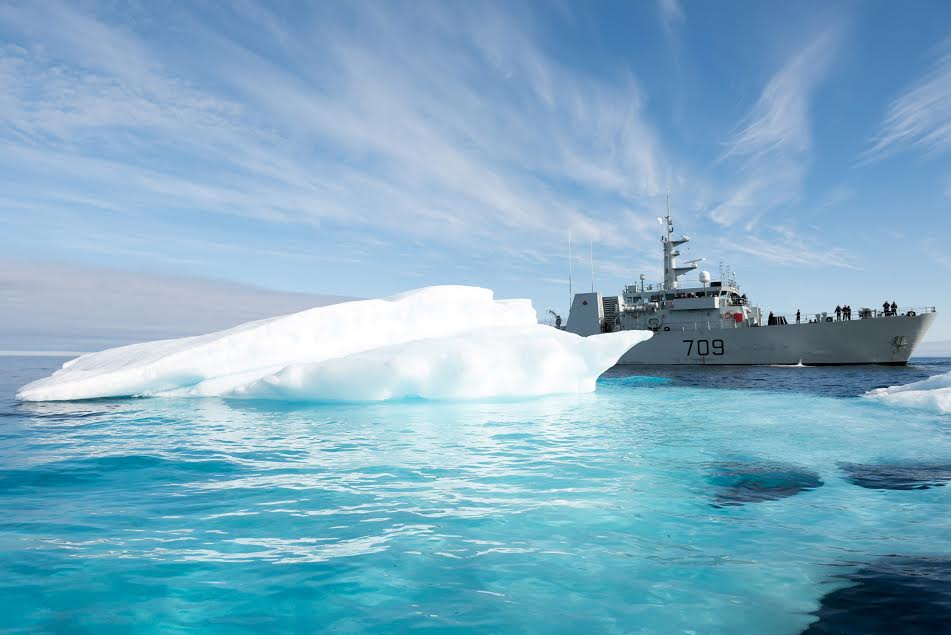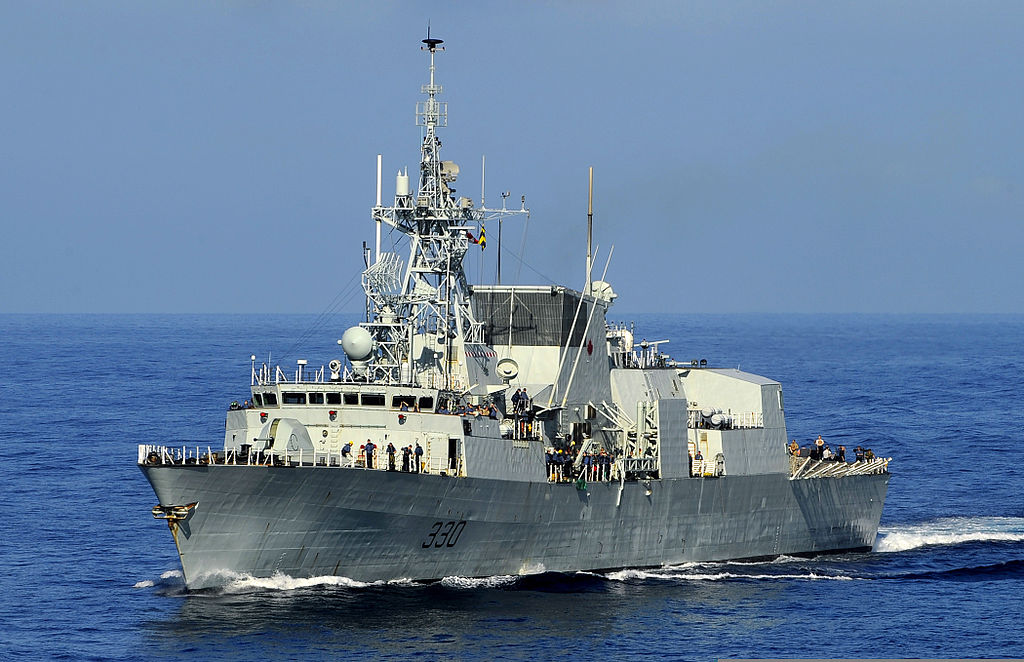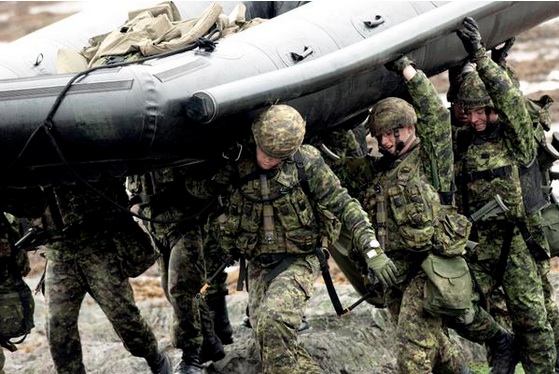While Canadian media attention in late August 2016 will undoubtedly be focused on Operation Nanook, a large-scale military exercise held each year in Canada’s Arctic, which this year will bring 250 troops to Haines Junction, Yukon Territory, to simulate relief operations following an earthquake while another detachment of 250 troops engage in mock combat near Nunavut’s Rankin Inlet, the equally important Operation Qimmiq will likely go by unnoticed. The Royal Canadian Navy’s (RCN) presence patrol in the Arctic, Operation Qimmiq 2016 will see the deployment of HMCS Shawinigan and Moncton, both Kingston-class coastal defence vessels, to Rankin Inlet and Arctic Bay before returning to their homeport in Halifax in September 2016.
The traditions behind Operation Qimmiq can be traced as far back as 1954, when HMCS Labrador, a Wind-class icebreaker that was ultimately decommissioned in 1987, ventured as far north as Craig Harbour, an Ellesmere Island hamlet that has since been abandoned as well. However, there is a risk that these sovereignty missions may have to be suspended for some time in the near future. The RCN’s 12 Kingston-class coastal defence vessels, mainly crewed by Naval Reservists, are approaching their retirement age.
In April 2016, it was reported that Canadian defence planners were studying the potential for five, 10 or 15 year life extensions on these vessels and that a decision is expected by the end of August 2016. This would certainly be in the best interests of Canadian defence and security, but life extensions for the entire fleet of Kingston-class vessels would likely be expensive and it is unclear whether Canada has sufficient shipyard capacity to refit these vessels while work is underway on the RCN’s new Arctic Offshore Patrol Ships.
The first two vessels of this new class, HMCS Harry DeWolf and Margaret Brooke, are expected to enter service in 2019. Meanwhile, the Kingston-class was originally intended for retirement in 2020. If all proceeds as planned, Operation Qimmiq will never lapse, with the two newly built Arctic Offshore Patrol Ships taking up the torch in 2020. However, if there are any delays in construction at the Irving Shipbuilding facilities, a summer could pass in the Arctic without an RCN presence. As such, Canadian defence planners should give serious consideration as to the fate of the Kingston-class and accelerate any plans for a life extension. Too much uncertainty has persisted surrounding the eventual fate of these vessels. In 2007, a $100 million mid-life refit plan for the vessels was discarded, while plans to cut the fleet in half in 2010 were proposed and then immediately rescinded, and now there seems to be renewed interest in a refit.
The earlier reluctance to preserve the Kingston-class vessels apparently stems from their low speed of just 15 knots (27.8 kilometres per hour) and relative lack of armament, which some defence planners felt left them ill-suited for patrolling Canadian waters. However, sovereignty missions entail numerous aspects other than the rapid interdiction of vessels that have intruded in Canadian territory. As noted, this edition of Operation Qimmiq will see the RCN collaborating with Canadian Hydrographic Services, Parks Canada, and the Arctic Research Foundation to conduct hydrographic surveys. The Kingston-class vessels are not particularly suited to this task, but they certainly have performed it reliably since entering service thanks to their shallow draft hulls and skilled crews. Preserving that, while managing overall defence expenditures, is worthwhile.
Photo: Members of Her Majesty’s Canadian Ship SASKATOON carefully manoeuvre the ship around a large piece of ice while travelling through the Amundsen Gulf during Operation NANOOK (2015), by Royal Canadian Navy via Government of Canada.
Disclaimer: Any views or opinions expressed in articles are solely those of the authors and do not necessarily represent the views of the NATO Association of Canada.




